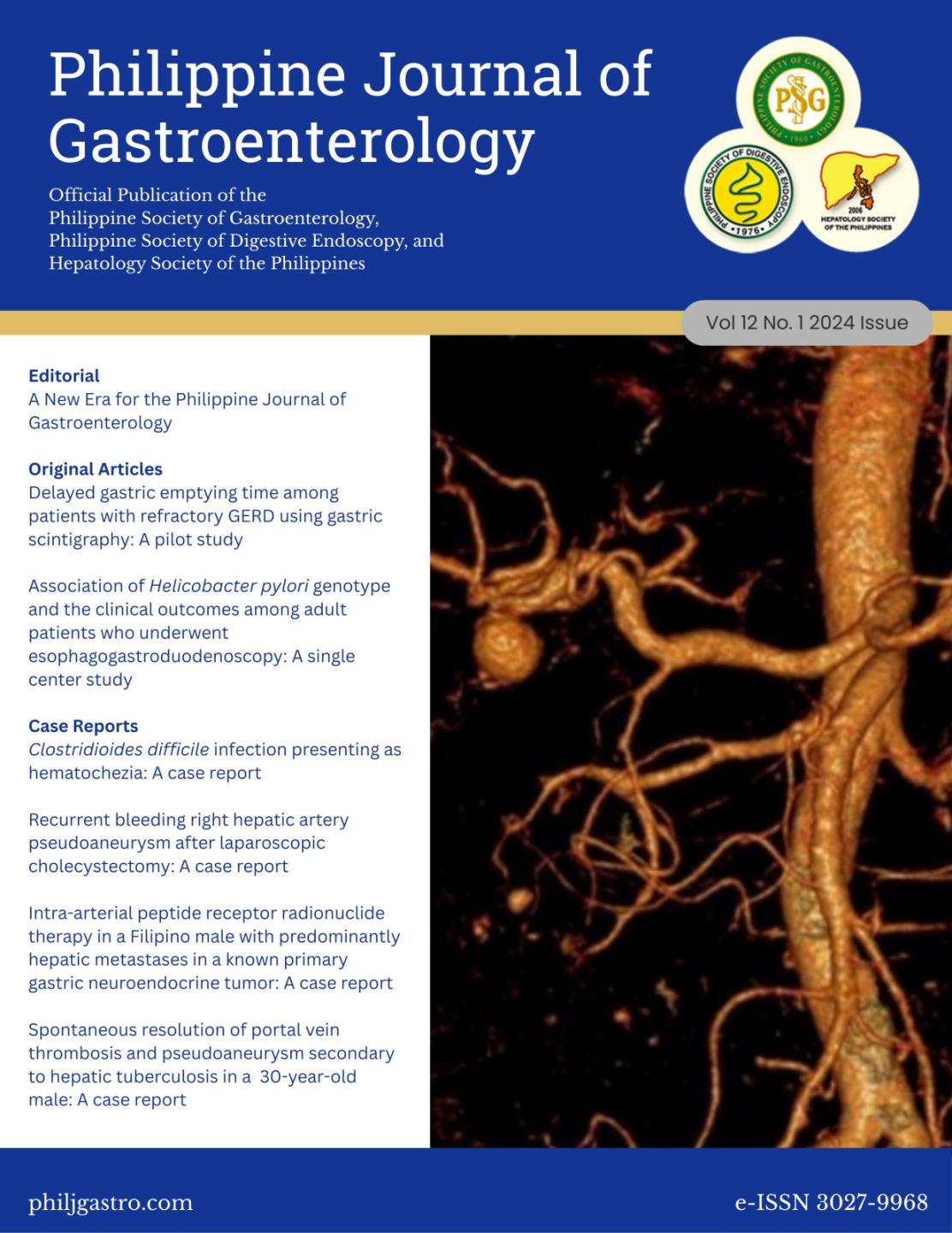Delayed gastric emptying time among patients with refractory GERD using gastric scintigraphy: A pilot study
Keywords:
Refractory GERD, Delayed Gastric Emptying Time, Gastric Emptying ScintigraphyAbstract
Introduction: For patients with GERD refractory to acid-suppressive treatment, evaluation for the presence of gastroparesis should be considered since delayed gastric emptying may possibly aggravate symptoms of heartburn, regurgitation, and other symptoms that may overlap with GERD. Studies concerning gastric emptying in GERD have long since provided conflicting results.
Objective: To determine the relationship of gastric emptying time using gastric scintigraphy in patients with refractory GERD and to determine whether delayed gastric emptying can predict severity of gastrointestinal symptoms in GERD.
Methods: A pilot study was done between October 2019 and November 2022 wherein 30 patients were recruited with 15 patients classified as typical GERD and 15 patients as refractory GERD. Patients were asked to complete a closed ended questionnaire which included Gastroparesis Cardinal Symptom Index (GCSI), GERD impact score (GIS), and the Quality of Life and Reflux and Dyspepsia (QOLRAD). All patients underwent gastric emptying scintigraphy at St. Luke’s Medical Center Quezon City Department of Nuclear Medicine. Delayed gastric emptying was defined as more than 60% of solid meal remaining at 2 hours or more than 10% remaining at 4 hours.
Results: The mean age of the patients was 41.1 ±11.86. years. 53.3% (n=16) of the patients were female. Overall out of 30 patients, 2 patients (6.7%) had delayed gastric emptying, 3 (10%) had rapid gastric emptying and normal results for the rest of the patients (83%). There was 1 patient (6.7%) with delayed gastric emptying and 1 patient (6.7%) with rapid gastric emptying in the refractory GERD group. While in the typical GERD group, 1 patient (6.7%) has delayed gastric emptying and 2 patients (13.3%) have rapid gastric emptying. There was no statistically significant difference in the gastric emptying time between typical and refractory GERD(p=0.830). Symptom scores between refractory and typical GERD were statistically significant based on the QOLRAD score (p=0.004). There was no significant difference in the GCSI (p=0.075), QOLRAD (p=0.722) and GIS (p=0.455) scores among those with delayed, rapid and normal gastric emptying.
Conclusion: Findings from this pilot study showed there was no significant difference in gastric emptying time between typical and refractory GERD. However, the small sample size of this study is not sufficient to conclude this relationship. Preliminary data gathered from this study will help in modifying the research methodology if pursued on a larger scale. This study shows that majority of patients with GERD do not have delayed gastric emptying. Instead of it being a major cause of GERD, delayed gastric emptying is more likely to be a potential cofactor aggravating this condition.
Downloads
Published
License
Copyright (c) 2025 Abigayle Therese Guiritan, Joyce Camille Tan, Albert Macaire Ong Lopez, Antonio Yabon, Charles Jeffrey Tan, Sherrie Isabel De Ocampo, Marc Julius Navarro, Michael Russel Lucentales, Carl Joshua Chanpian, Irene Bandong, Areangela Angeles

This work is licensed under a Creative Commons Attribution-NonCommercial-NoDerivatives 4.0 International License.


